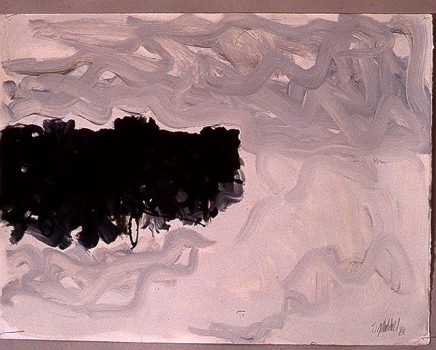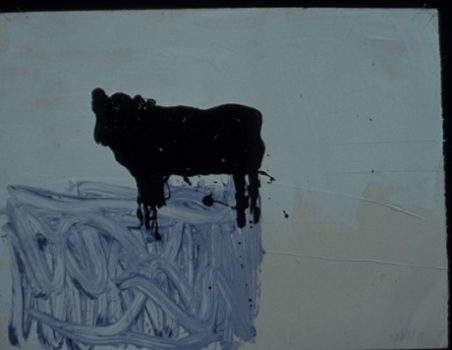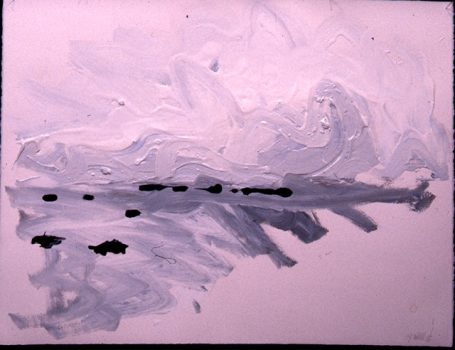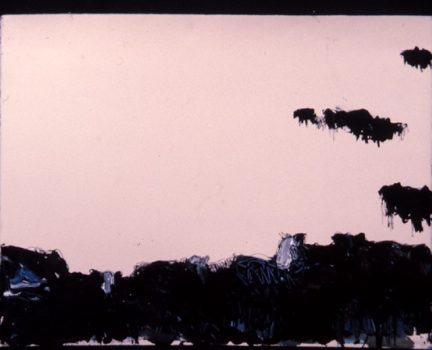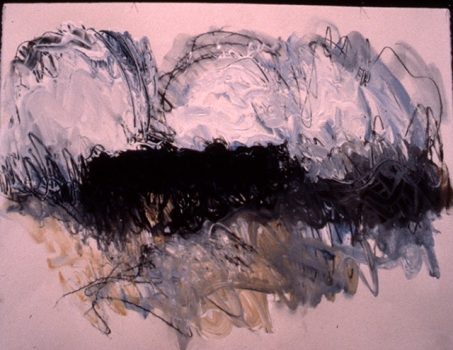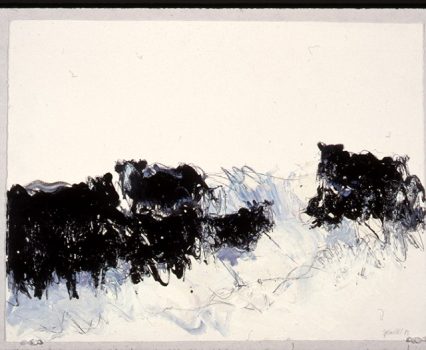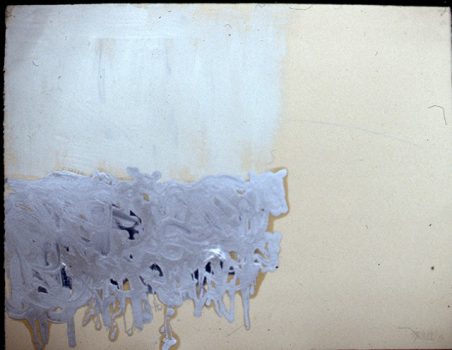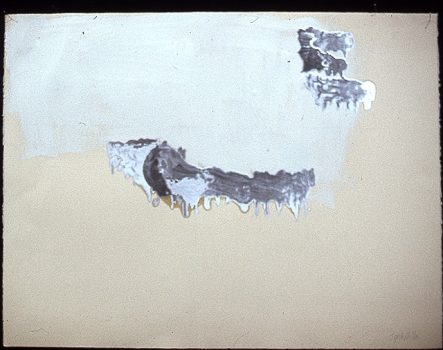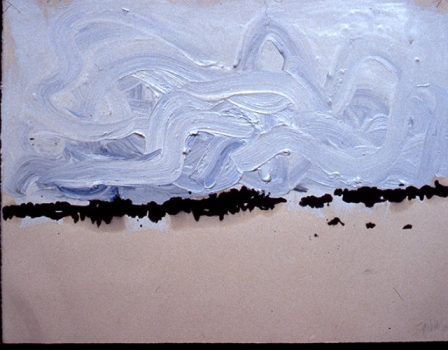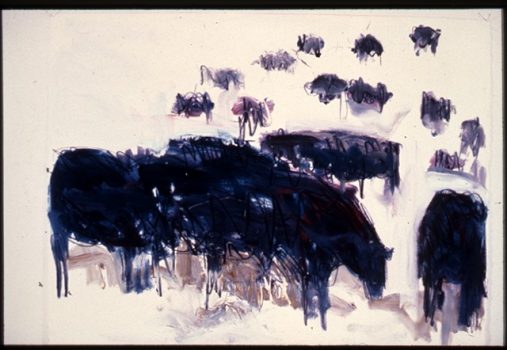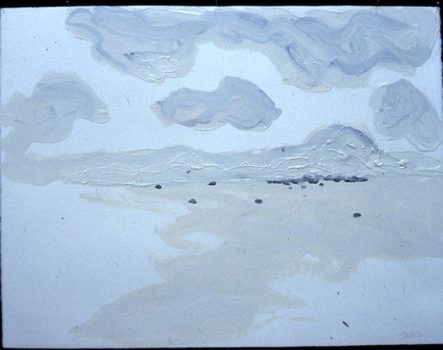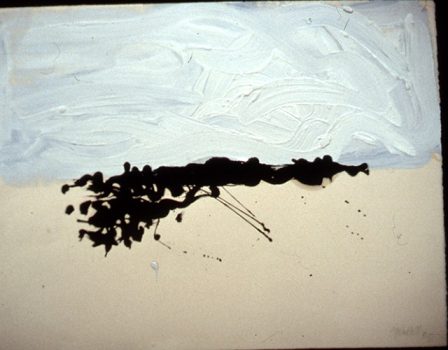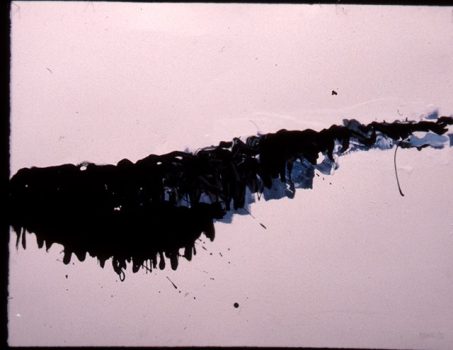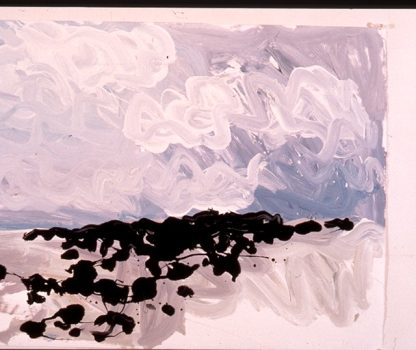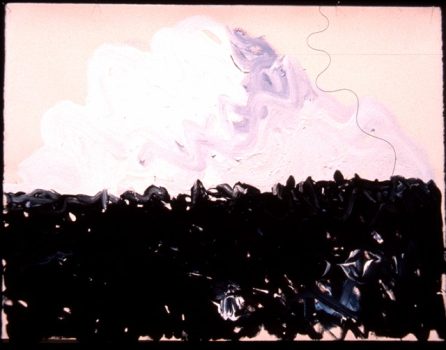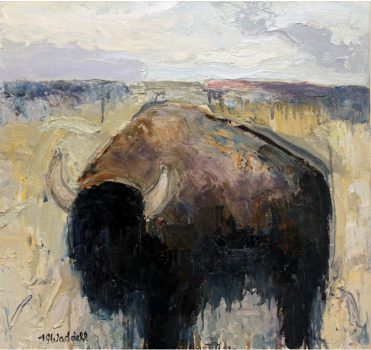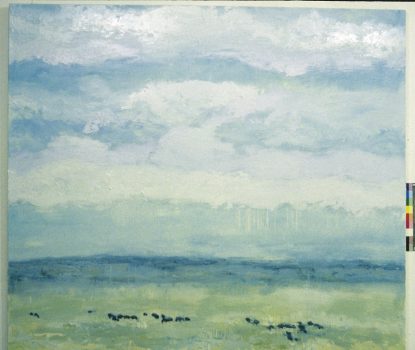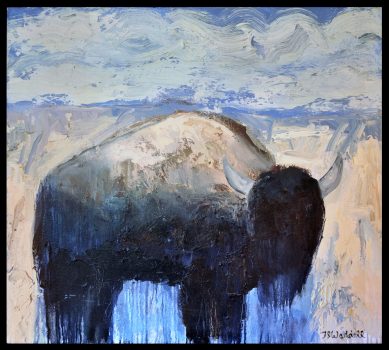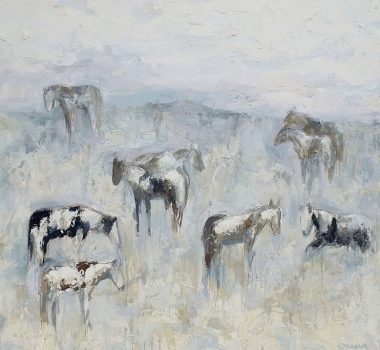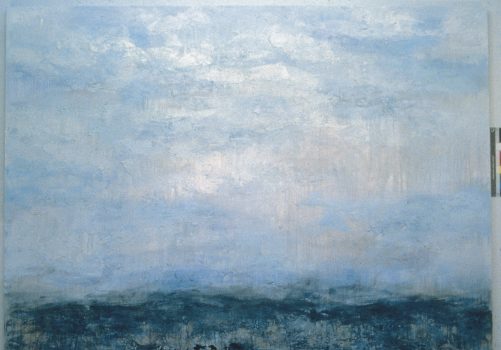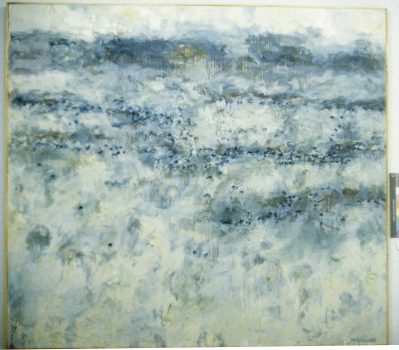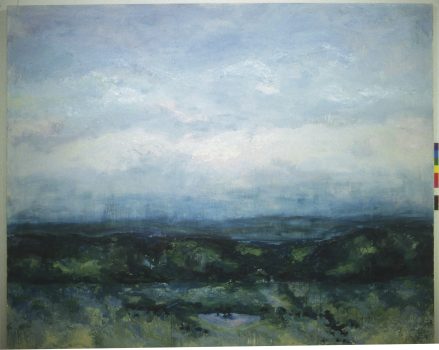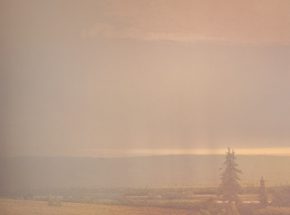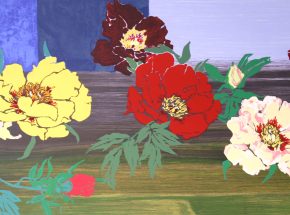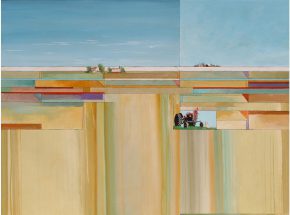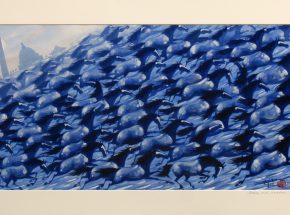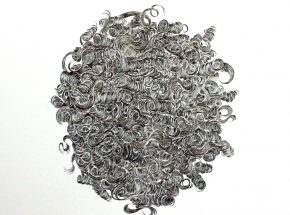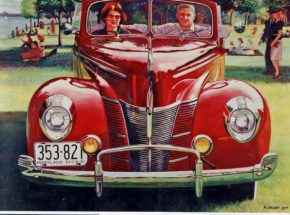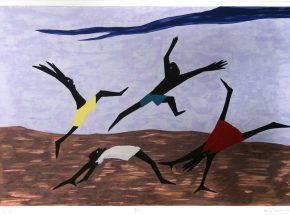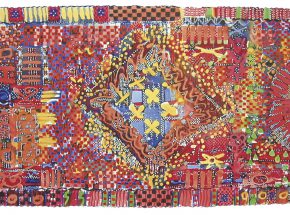
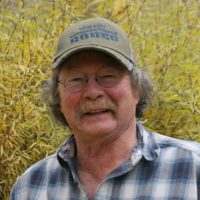
For over five decades, Theodore Waddell has pursued his passion for art. Long recognized as one of Montana’s most important contemporary artists – one who has played a significant role in the development of late Modernism in Montana and the West. His work has been labeled a tribute to the forgotten West.
While his life as a university professor gave him the tools, his two decades as a rancher gave him the perspective to create art that reflects his surrounding landscapes. Waddell divides his time between his ranches and studios in Hailey, Idaho and Sheridan, Montana where he lives with Lynn Campion, writer and photographer. The viewer of his works is exposed to the illusion of reality and is given the chance to sense the isolation and grandeur of the unforgiving land of the West. He spends much time observing the places that interest him before he paints and then captures the intensity of the modern West by stacking elements and permeating the space with seasonal light which affects nature’s colors, forms, and animal life. This process allows him to manipulate the elements and to explore beyond traditional boundaries. He creates lush dimensional paintings with a swirling impression of landscape featuring cattle, sheep and horses. Each of his paintings is titled according to the geographic location which inspired it.
As a painter he was influenced by Isabelle Johnson’s work and technique. Johnson was chairman of the art department at Eastern Montana College and a friend until her death in 1992. Waddell’s early works confined his view to more manageable tracts of landscape, restricting the skyline to a slim bar at the top of the image and flattening perspective through his choice of color. Waddell’s career took off in 1983 when he was invited to exhibit his work in the prestigious 2nd Western States Corcoran Exhibition which is a survey of American painting and is presented as a touring show every two years. In 2004 he was honored at the White House for having paintings in various U.S. Embassies. His works are found in private and corporate collections throughout the world.
Using his training in sculpture, Ted began to collect skulls and bones on his ranch property incorporating them into art in an effort to make the viewer consider the issue of mortality and his responsibility toward all creatures. The particular object which generates the sculpture often includes painted parts and these “trophies” are handled with humor which allows the seriousness of the content to be transformed.
Waddell attended Brooklyn Museum Art School, Montana State University, and Wayne State University. His works have been exhibited in galleries and museums throughout the country. Theodore Waddell works of steel sculpture from his early career are fixed in public places throughout Montana and on his farm in Hailey, Idaho. He also developed an interest in printmaking which began in graduate school at Wayne State and spent two years learning the rudimentary concepts. The second printmaking opportunity presented itself in the early ’80s when he was invited to create monotypes at the Experimental Workshop. He now has a fully equipped print studio where he does monotypes and woodcuts. He does his lithographs at Lawrence Lithography Workshop.
Theodore Waddell’s art is always evolving and has struck a chord with viewers of it. Washington photographer Chuck Kuhn wrote, “To my way of thinking, his art is a living treasure of the best of Montana and stands tall against any contemporary art – and not just in the West.” Bob Durden, Curator of Art for the Paris Gibson Square Museum of Art in Great Falls, Montana writes in their catalogue The Weight of Memory which describes the pictorial tradition of the West, “Theodore Waddell became one of the artistic voices who lit the way for modern and contemporary art developments in the region, and though obvious visual differences abound, an empathy and continuity exists between the works by Waddell and his artistic ancestors. Mostly gone now are the expansionist attitudes of the 19th and early 20th centuries, but much romaticism and the pictorial tradition remain in the region joined by a rich modern/contemporary tradition that Theodore Waddell has helped define.”
Website
http://www.theodorewaddell.com

